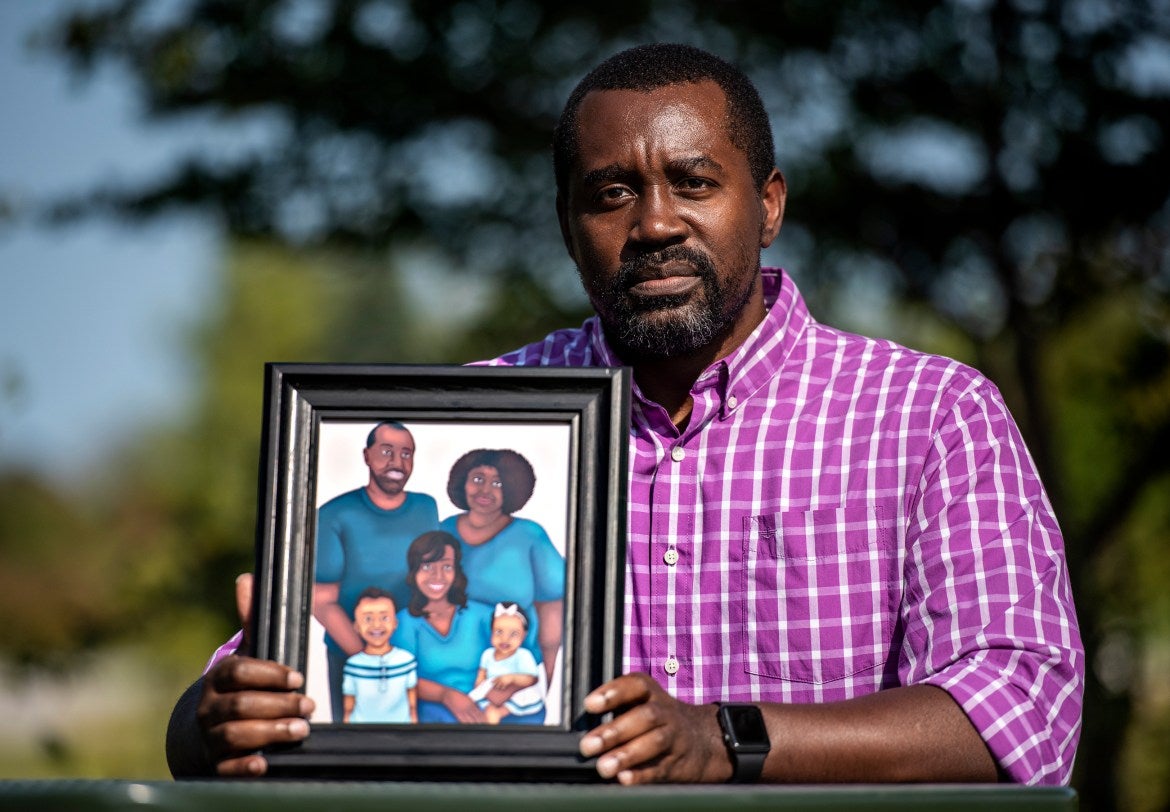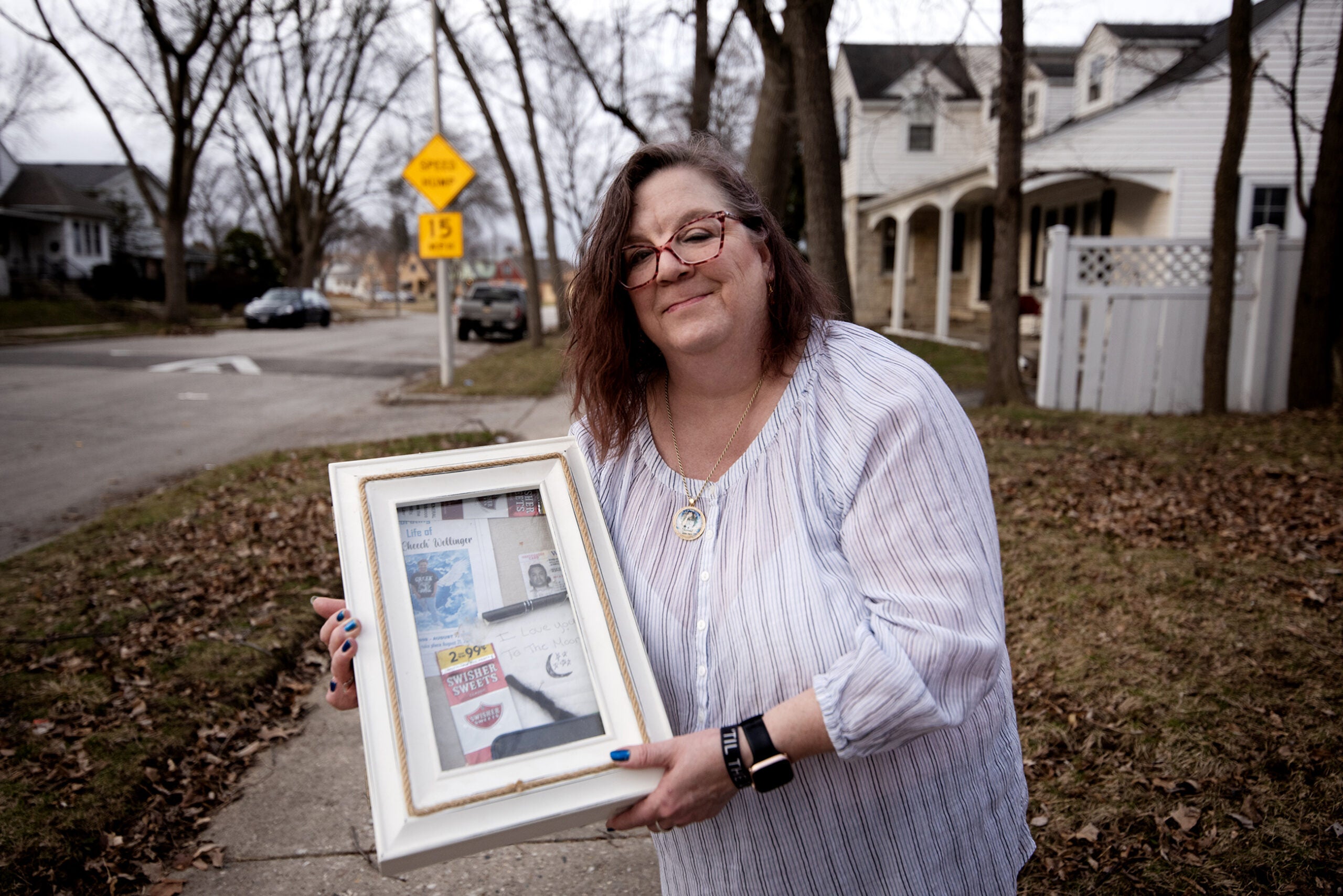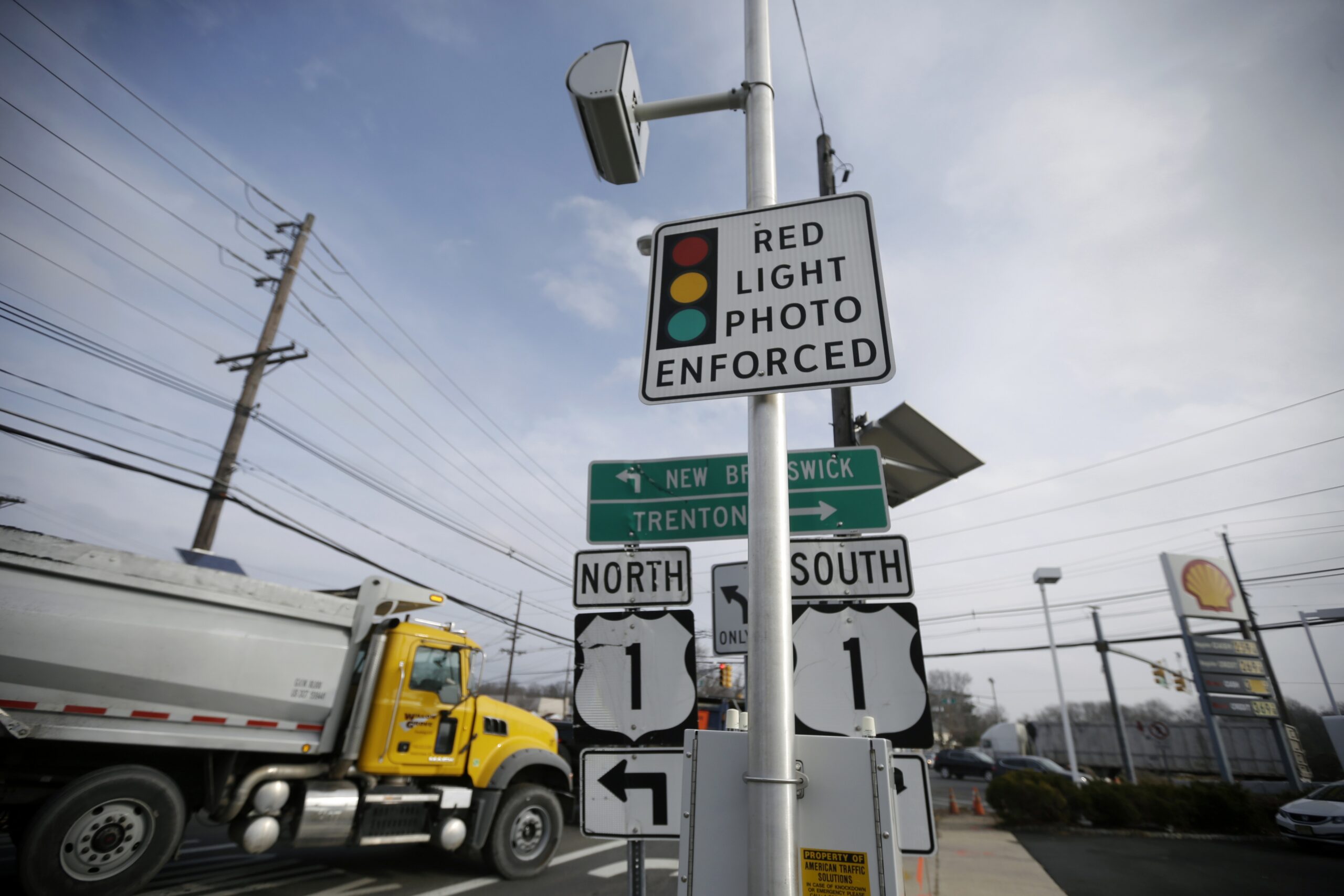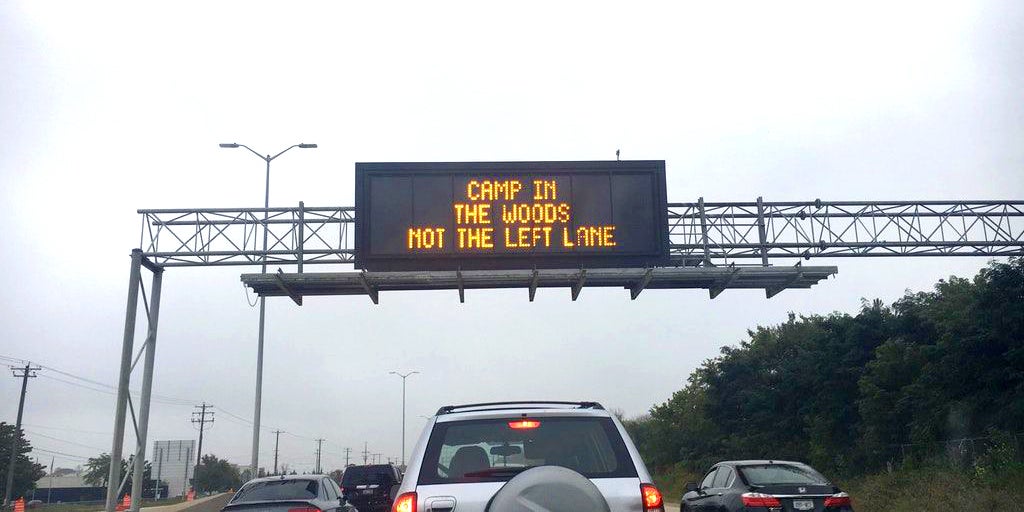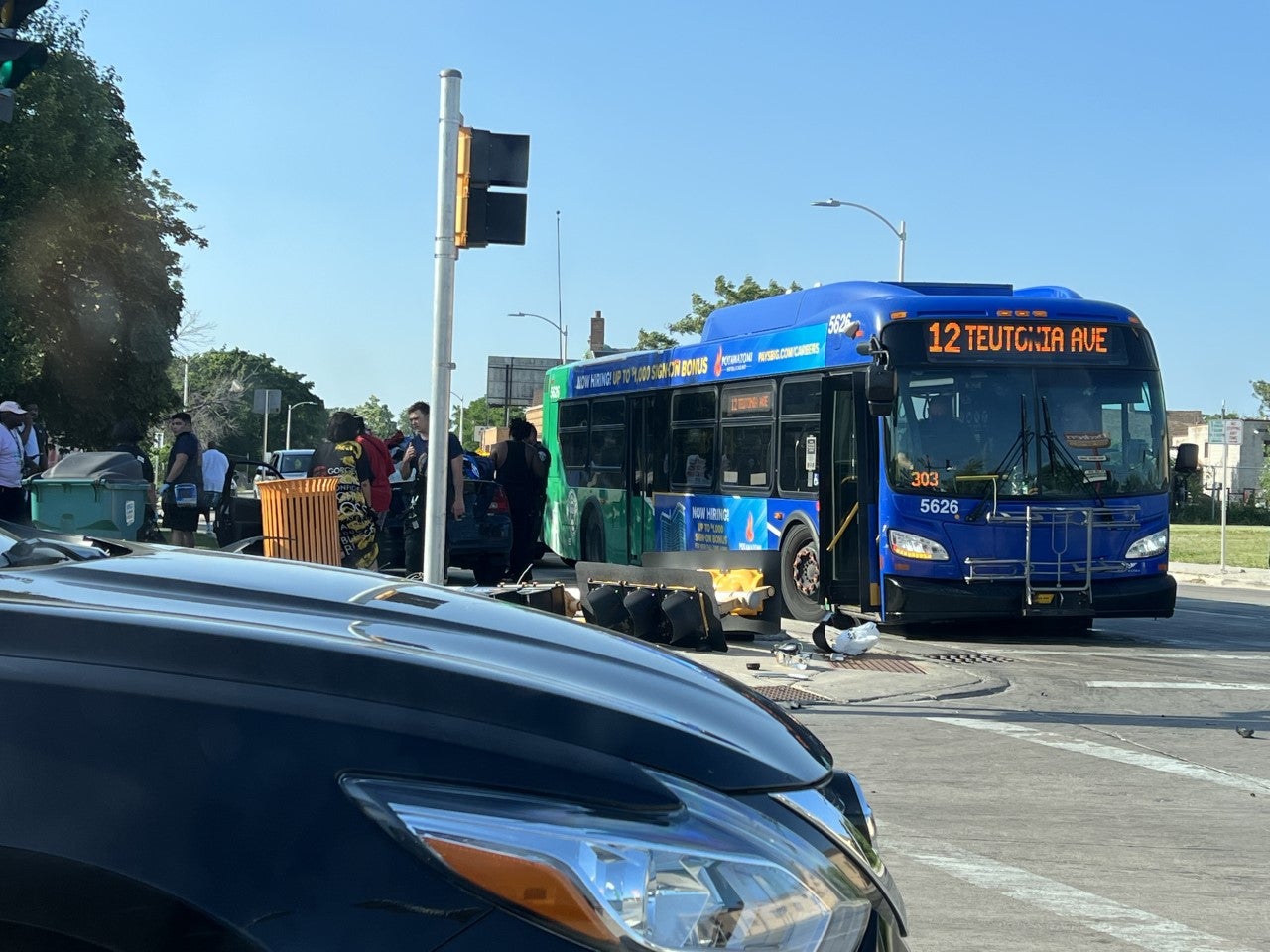Tristain Thomas remembers seeing plenty of reckless driving while living along Milwaukee’s West Fond du Lac Avenue during his childhood. A police officer would park just blocks away from Thomas’ home in the Grasslyn Manor neighborhood to catch drivers barreling down the four-lane state highway.
“He would sit there for eight to 10 hours every day, pulling people over constantly, because they’re just flying down the street with no regard for anyone else,” Thomas, 40, recalled.
Thomas now lives in Appleton, but the reckless driving hasn’t stopped along West Fond du Lac Avenue, which doubles as State Highway 145 as it runs through Milwaukee. Thomas lost his sister because of it.
Stay informed on the latest news
Sign up for WPR’s email newsletter.
On the morning of March 12, Dwynetta Thomas, of Sheboygan, was driving down the urban highway and tried to turn left onto Congress Street — roughly a mile from her and Tristain’s childhood home. That’s when a silver Volvo slammed into Dwynetta’s red Chevrolet Cobalt, killing her. Speed appeared to be a factor, according to the crash report, and the Volvo’s driver, who suffered minor injuries, was charged with driving with a revoked license and causing a death.
“She did so much for so many people,” Tristain said of his 43-year-old sister. “The day she was killed she was actually dropping someone off at a store. So I think it’s apropos that she was out helping someone and then that happened. She was definitely loved.”
At least 397 people have died on Wisconsin’s roads and highways in 2022 as of Sept. 11, according to preliminary data from the Wisconsin Department of Transportation. That’s more than the 388 fatalities logged at that point in 2021, which was the deadliest year on Wisconsin’s roads since 2017.
Reckless driving disproportionately affects Black residents in the deeply segregated state — particularly in Milwaukee.
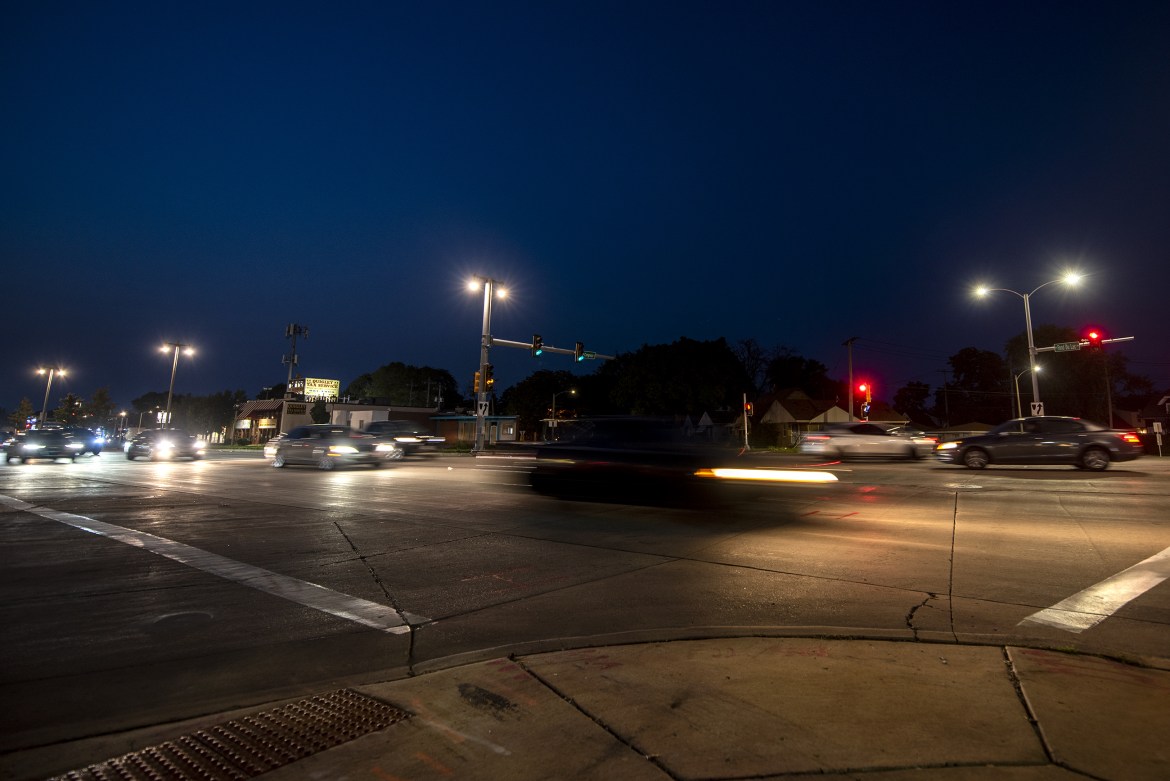
‘Connecting highways’ eyed
Although much of Tristain’s family has left Milwaukee, they continue to discuss how to make Fond du Lac Avenue safer. Aside from wanting stiffer penalties for reckless drivers — which is part of Mayor Cavalier Johnson’s road safety initiatives — Tristain wonders why Fond du Lac Avenue hasn’t been redesigned to prioritize safety, and why it looks “exactly the same” as it did in his youth.
“I know they have design changes downtown … where they’re going to make it more bicycle-friendly and pedestrian-friendly,” he said. “And I’m like: ‘Cool, great. Do the same thing for Fond du Lac. Do the same thing for Capitol, where it’s actually needed.’”
Capitol Drive is another state highway cutting through the city’s northwest side.
As traffic deaths mount in Wisconsin, officials in Milwaukee, Madison and other cities are having similar discussions. Cities are taking multi-pronged approaches to making roads safer for the motorists, pedestrians and bicyclists who share them. That includes lowering speed limits, tightening enforcement and reengineering roads.
But their options are limited on what the DOT calls “connecting highways” like Fond du Lac Avenue and Capitol Drive — state highways that run through towns and cities that can be particularly dangerous.
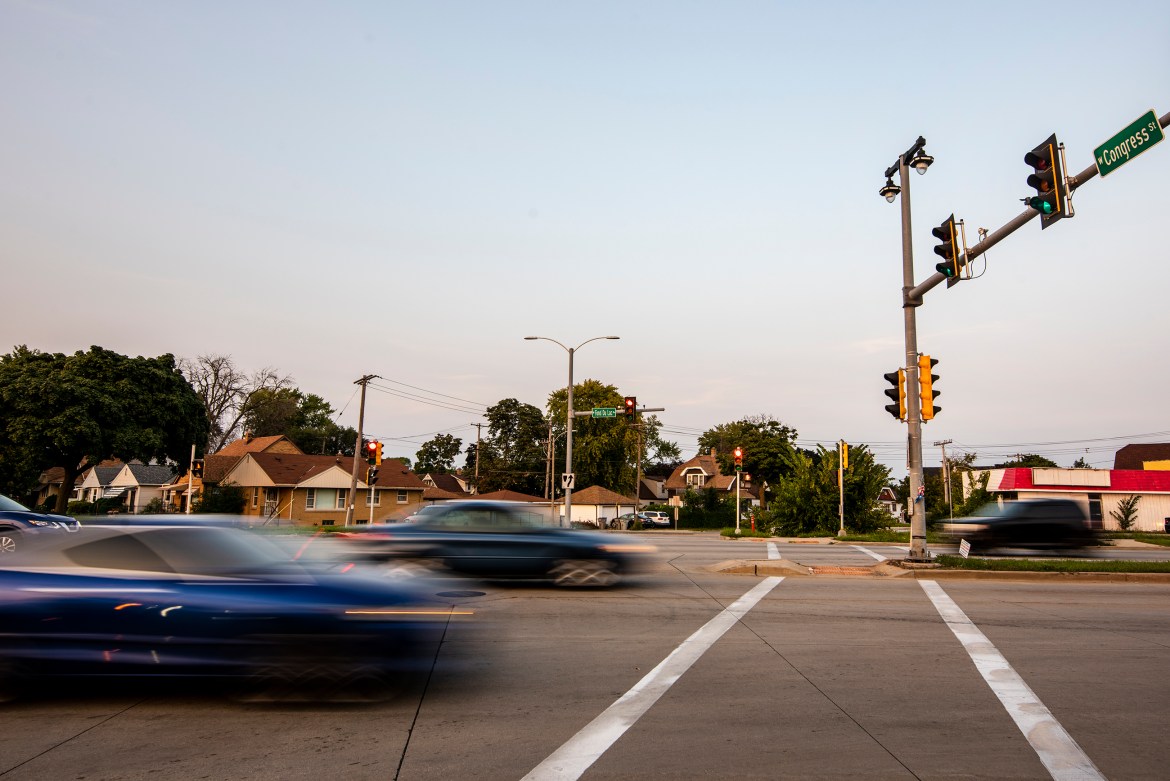
On state highways, including urban stretches, DOT gets the final say on any plans to narrow lanes, add concrete bump-outs to protect pedestrians or add other traffic-calming infrastructure. But DOT largely prioritizes smoothly flowing traffic for drivers. That focus complicates efforts to bolster safety in the neighborhoods that drivers speed through, according to city officials and grassroots advocates.
Fond du Lac Avenue runs northwest from downtown Milwaukee. Capitol Drive, part of State Highway 190, runs east-west and intersects with Fond du Lac Avenue.
At least 42 people, including Dwynetta Thomas, died in traffic collisions along the two Milwaukee highway stretches from January 2017 to July 2022, according to a Wisconsin Public Radio/Wisconsin Watch analysis of preliminary police crash reports compiled by the DOT and the University of Wisconsin-Madison.
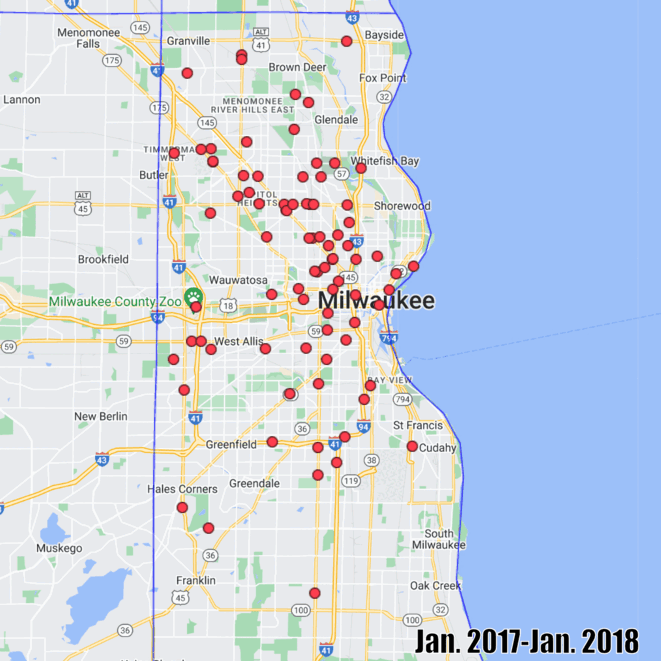
That’s about 11 percent of the City of Milwaukee’s 381 total traffic fatalities during that period. The analysis did not include more recent crashes on Fond du Lac Avenue that killed a 71-year-old driver and a 36-year-old pedestrian, according to media reports.
In 2017, 18 of Milwaukee’s 25 most crash-prone intersections (72 percent) sat on or near connecting highways. Of those top 25 high-crash intersections, 16 were on or near Fond du Lac Avenue or Capitol Drive, according to a report by the city Department of Public Works and Police Department.
Jordan Morales, vice president of the Sherman Park Community Association, has become one of Milwaukee’s loudest proponents of safer streets out of concern for his five children. He said state bureaucracy has stymied solutions along Capitol Drive and Fond du Lac Avenue, which he calls Milwaukee’s most deadly corridors.
Getting state funds or permission to calm traffic on the corridor is difficult, Morales said.
“That is definitely a huge challenge that we have with reducing fatal car crashes in the city,” Morales said.
A mismatch between DOT’s car-centric priorities and the diverse transportation needs of residents in cities persists statewide, said Gregg May, transportation policy director for the transportation and environmental advocacy group 1000 Friends of Wisconsin.
“It’s one of the big challenges we face as biking, walking and transit advocates,” May said. “The DOT has their own set of priorities, which can run counter to the adjacent communities to which these urban highways run. It’s an incredible challenge, trying to get them to think differently about implementing more walking, biking and safety options.”
Stephen Flottmeyer is the planning chief for DOT’s southwestern region. He said the agency considers the needs of all road users when weighing new projects, and it often follows the lead of local transportation agencies.
He said the department recognizes the “competing needs” between road users along connecting highways. But he acknowledges DOT typically approaches rural and urban highways with the same set of goals, including traffic flow.
“The only difference, within the connecting highways, is the city plays a much bigger part in the conversation,” Flottmeyer said.
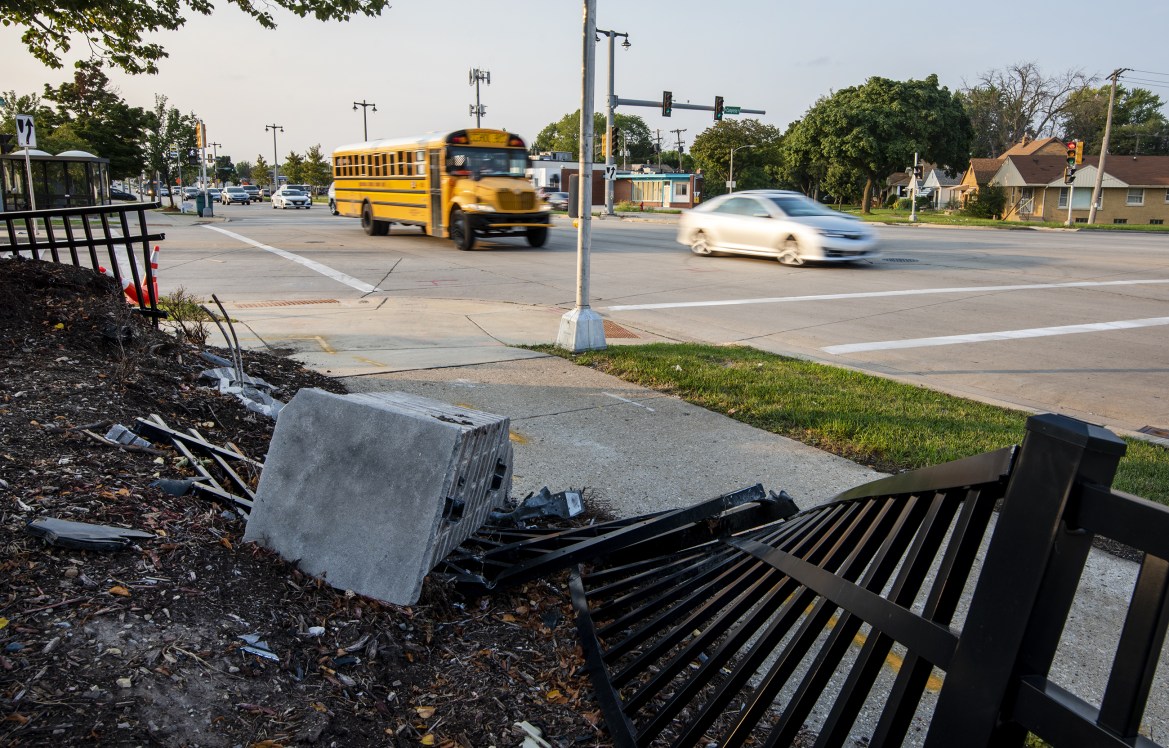
City-state collaborations
Johnson represented parts of Milwaukee’s northwest side on the city’s Common Council before being sworn in as mayor in December 2021. He said “traffic and unsafe driving conditions” on Capitol Drive kept constituents south of the highway from crossing over to shop at the Midtown Center Pick ‘n Save — effectively limiting their grocery options.
“That’s unacceptable,” Johnson told WPR and Wisconsin Watch.
One of Johnson’s first acts as mayor included declaring reckless driving a public safety crisis and releasing a plan that includes redesigning roads, increasing enforcement and penalties and towing unregistered vehicles linked to reckless driving. This summer, the city began an initiative to sue repeat reckless driving offenders. He built upon Milwaukee’s Complete Streets framework, which details how city officials should balance the needs of cyclists, motorists and pedestrians.
But many of those plans depend upon collaboration with DOT, Johnson said. He added that the state agency has supported the anti-reckless driving push and is allowing the city to add concrete bumps outs — curb extensions into parking lanes to narrow pedestrian crossings — along connecting highways. The bump-outs also prevent drivers from veering into parking lanes to pass cars on the right — a dangerous maneuver that some call the “Milwaukee Slide.”
DOT also permitted the city to build concrete “refuge islands” to help pedestrians safely cross one short stretch of Fond du Lac Avenue.
“We’ve got to work to make sure the environment is safe for all users of the roadways, especially folks in their own neighborhoods who are simply trying to go to the store, drop their kids off at school or get their prescription drugs,” Johnson said.
Jerrel Kruschke, Milwaukee’s interim commissioner of public works, said the city-state collaboration has been “going in the right direction over the past few years” with DOT “starting to understand the needs that we have in the city.”
Still, strict DOT guidelines have blocked more ambitious city efforts to slow down traffic by narrowing or eliminating some lanes on connecting highways, Kruschke said. The process unfolds as a negotiation in which Milwaukee’s Complete Streets framework often conflicts with state standards.
DOT’s approach works more smoothly in rural communities where motorists alone use the road, said Chris McCahill, managing director of the State Smart Transportation Initiative, a project of the UW-Madison and Smart Growth America that connects state transportation departments. Urban highways are trickier as bicyclists and pedestrians share space with drivers trying to get across town quickly.
“Traditionally, they’re (DOT) highway builders, and they’re good at that. Then you have folks coming from a city perspective, or a town perspective, whose interests are often the complete opposite of that,” said McCahill, who is also a member of Madison’s Transportation Policy and Planning Board.
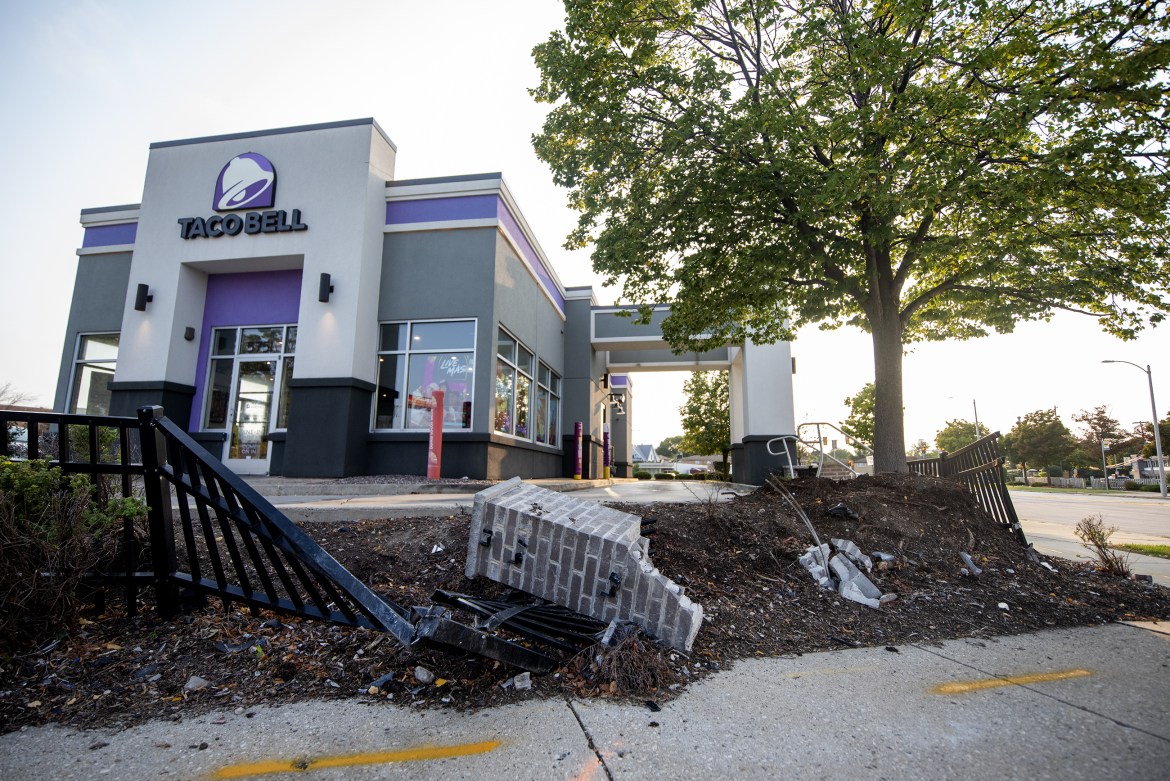
Compromising in Madison
In Madison, DOT approved lower speed limits in 2020 along East Washington Avenue, a portion of State Highway 151 that cuts through the isthmus and is popular for drag racers. The change dropped the speed limit to 25 miles per hour in some parts of the East Wash, down from 35 mph.
From January 2017 to July 2022, seven of Madison’s 61 traffic fatalities (11 percent) occurred on the connecting highway portion of East Washington, and 18 deaths (nearly 30 percent) occurred across all connecting highways in the city. In 2020, nine of Madison’s 25 highest-crash intersections (36 percent) sat on or near a connecting highway, according to a report by the city’s Traffic Engineering Division.
DOT’s lane restrictions require Madison to compromise as it prepares to launch its east-west Bus Rapid Transit line along the state highway. The state will allow for designated bus lanes, but only if general traffic can use them during rush hour to reduce congestion, said Tom Lynch, Madison’s transportation director.
“We probably would have preferred to have kept the bus lanes during the rush hour,” Lynch said. “But this is one of the compromises we made so that we could use East Washington for Bus Rapid Transit.”
City leaders have pitched the rapid transit line as a major tool to combat traffic congestion in fast-growing Madison.
Any significant shift from cars to bus traffic could limit road fatalities. In 2020, the national death rate per 100 million passenger miles was 28 times higher for car occupants than bus riders, according to data compiled by the National Safety Council, a nonprofit advocacy group.
Call for more resident input
In seeking to discourage reckless driving along state highways, governments should prioritize the needs of residents most impacted, said Jake Newborn, assistant director of the Bicycle Federation of Wisconsin.
That would include making public meetings more accessible, he said. While Milwaukee’s alders accept emailed comments on traffic concerns and new transportation projects at any hour, the Common Council and its committees typically hold meetings on weekday mornings and afternoons — when most people are at work. Madison’s Common Council has similar practices, although its meetings typically happen during the evening, after many people get off work.
DOT has detailed standards for public engagement on its projects, and the department recommends holding public involvement meetings during evening hours to avoid work conflicts with community members. But Newborn says it often feels like state and local officials don’t actually take the community’s input into account.
“They’re run in a fashion that is meant, I believe, to get limited actual engagement from people,” Newborn said of the meetings. “We do these stakeholder and public input meetings and then they just go and do what they were going to do anyway. And how much of that input is actually taken into account?”
The Milwaukee Common Council is considering rebuilding a 0.6-mile portion of Fond du Lac Avenue. The current plan doesn’t call for major design updates, David Tapia, a city Department of Public Works project manager, told the public works committee in September. But the project, if it moves forward, will include a public comment period that could influence the final result.
Alder Russell Stamper told the committee that his constituents along that highway stretch want safety improvements.
Construction is tentatively planned for 2026.

‘A gigantic loss for our family’
Meanwhile, Tristain Thomas’ family continues to grieve Dwynetta’s death.
“It’s still incredibly hard to believe she isn’t here,” he said. “We’ll have a messenger call where everybody’s got their video cameras on, and we’re looking at each other, and you’re waiting for her to come one and it’s like, ‘Oh, she’s not. She’s not coming on anymore.’”
DaJohn Norwood, the driver who crashed into Dwynetta Thomas, was arrested and charged with knowingly operating a vehicle without a license, causing death. Norwood was also pulled over in 2021 while operating without a license, according to a criminal complaint. A judge accepted his guilty plea, and his sentencing hearing is scheduled for November.
Dwynetta is survived by her adult son and daughter and four siblings, including Tristain.
“It’s a gigantic loss for our family. It’s a gigantic loss for the community she served,” Tristain said. “And we just have to make sure nobody else’s bright light gets snuffed out.”
The nonprofit Wisconsin Watch (www.WisconsinWatch.org) collaborates with WPR, PBS Wisconsin, other news media and the University of Wisconsin-Madison School of Journalism and Mass Communication. All works created, published, posted or disseminated by Wisconsin Watch do not necessarily reflect the views or opinions of UW-Madison or any of its affiliates.

